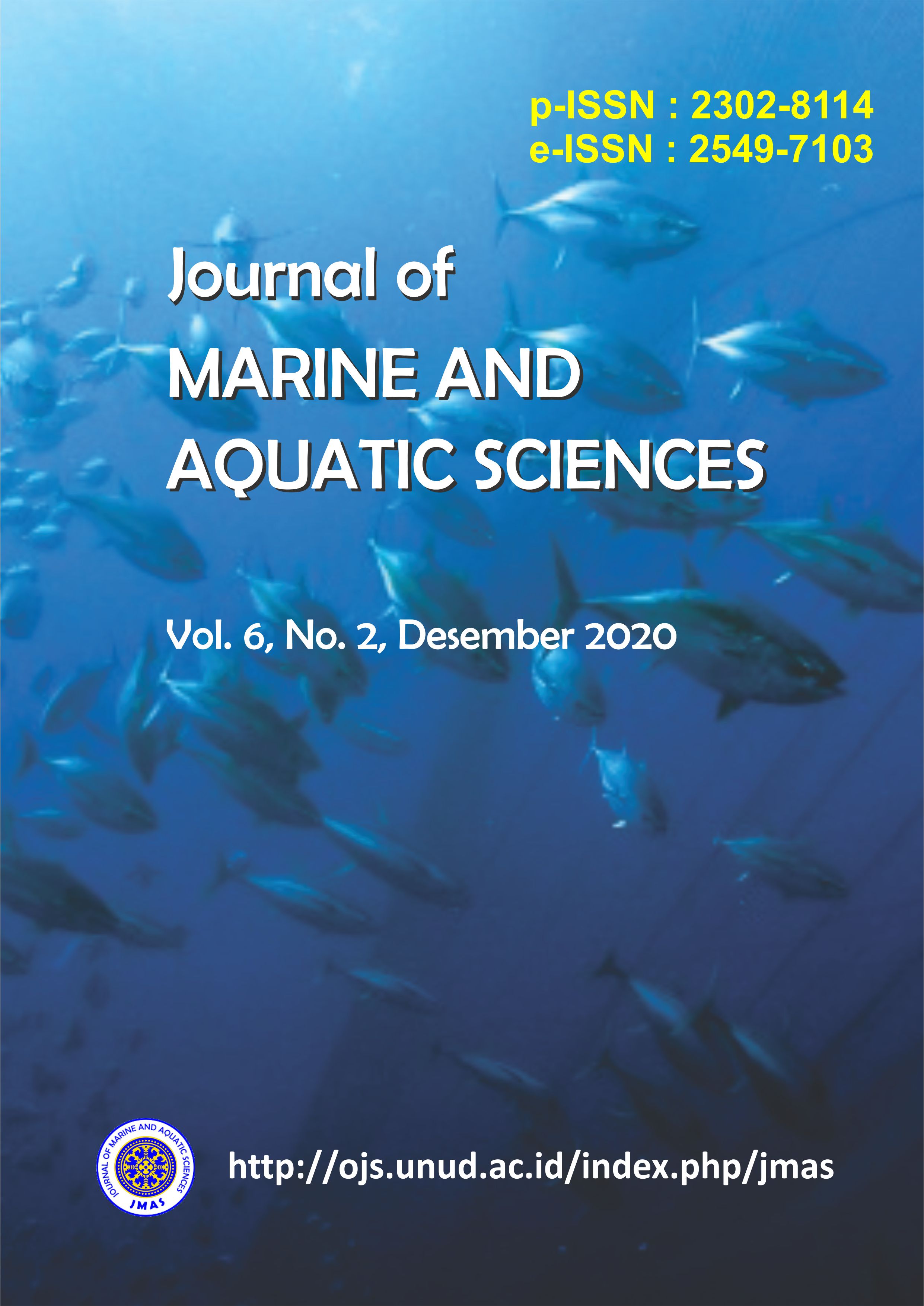Perbandingan Produktivitas Pancing Ulur (HandLine) Dan Jaring Insang (Gill net) Nelayan Desa Kusamba, Klungkung, Bali Terhadap Hasil Tangkapan Ikan Tongkol (Auxis sp.)
Abstract
This study uses two environmentally friendly fishing gears namely gill net and hand line. The length of one set of hand line is 100 m and the length of one set of gill nets is 250 m. The purpose of this study was to determine the number of catches, species composition of catches and the efficiency of fishing gear that provided benefits for the fishermen of Kusamba Village. This data collection was carried out in field plunge directly with fishermen using the one day trip method for 35 trips during the tuna fishing season by Kusamba Village fishermen. Auxis sp is one type of fish that is the main target of the catch of fishermen in Kusamba Village. Auxis sp often follows the current circulation, the catch of Auxis sp on the fishermen of Kusamba Village has a different amount of production every day. In terms of Auxis sp catches by Kusamba Village Fishermen who use two fishing gear are dominated by gill nets and the quality aspect is dominated by hand linecatches. It is known that there are two types of tuna, namely Auxis rochei and Auxis thazard. The catch is in principle the output of fishing activities, while the effort needed in principle is an input from the fishing activities, fisheries production in an area has increased or decreased can be seen from the results of CPUE. The highest CPUE value of gill nets is 53.75 tails / effort, the highest CPUE value of hand line is 75 tails / effort.
Downloads

This work is licensed under a Creative Commons Attribution 3.0 International License.
Copyright 2012 - 2023 Journal of Marine and Aquatic Sciences (JMAS)
Published by Fakultas Kelautan dan Perikanan Universitas Udayana, Denpasar, Bali, Indonesia
JMAS (p-ISSN 2302-8114; e-ISSN 2549-7103)


